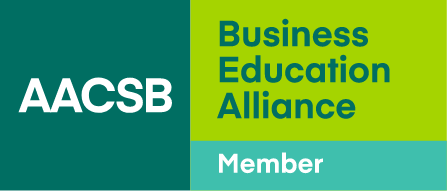What’s Missing From Business School Rankings
It’s that time of year when the majority of business school rankings, old and new, have rolled out and begun to make headlines. But before consulting these rankings for such an important decision about your future, you might want to consider some of the things we believe they are lacking—and other aspects to consider what might be the best business school for you, such as the right type of program for your intended career, how important geography is in your decision, and whether rankings factors align with what’s important to you and your future.
The Best Program That Fits Your Needs
Because of the need to whittle down overall school or program “quality” to a single number, one significant element missing from business school rankings is a comprehensive formula that takes all of your concerns into consideration. For example, several of the most popular business school rankings, including Forbes and Bloomberg, only include U.S.-based institutions. The fact that these particular rankings hold such stature in the media perpetuates a myth that the best business schools are only in the U.S. But in fact, as of this posting, AACSB accredits nearly 800 business schools in more than 53 countries! That means the same schools in countries around the world are held to the same stringent standards of quality as schools that appear on the U.S.-only rankings. In today’s workforce, where a global mindset is an increasingly expected skill for job candidates, seeking educational experiences outside of one’s home country should factor in to the business school decision.
Furthermore, new rankings are released every year (or sometimes every other year), but for the frequency of releases, the schools included in the uppermost placements of rankings often remain the same. They may move a few places up or down, but when a new school makes it onto a particular ranking, it’s newsworthy, suggesting that the same top results are expected year after year. On the other hand, schools might move 10 or 20 places year over year based on a slight nuance in the formula that determines a particular ranking. This type of movement is virtually meaningless when it comes to quality improvement; one year is not nearly enough time to determine whether a school or program has advanced or declined in its quality of education.
AACSB accreditation, however, measures whether institutions are continually working to improve the education they provide students, adapt their programs to the ever-changing demands of the workforce, improve the quality of research they produce, and ensure the right faculty are in place to meet student needs.
But no matter the published rank of an institution, the numbers don’t inform students of where they will find their best fit—that can only be discovered by the student. While data on admissions, graduation rates, job placements, and post-grad salaries are important, (1) those numbers do not show the full, accurate picture, and (2) they can’t tell a prospective student whether the entire college experience will be a valuable one for his or her unique needs and desires. It is impossible to include in methodologies the understanding that individual students thrive in different environments, including social, cultural, and academic.
Relevant, Useful Information for Decision-Making
Even if a prospective student were to decide that rankings are the best way to determine which business school to attend, they’d have to steer through the clutter of existing rankings, which increase every year based on various factors like location (U.S., global, regional), type of program (MBA, specialized master’s, online MBA, Executive MBA), and specialization (accounting, marketing, entrepreneurship). One publication alone may have more than 10 different business school rankings, not to mention the new sources of rankings that continue proliferate—all with different formulas for producing placement numbers. Is such a fragmented system really helping prospective students make the best-informed decision?
The abundance of rankings available can be confusing. Students deciding on a program may not know whether they want to pursue an MBA or a specialized master’s, and rankings for those two types of programs aren’t comparable because the same methodologies aren’t used across both. And despite the vast number and variety of rankings now available, they still neglect to consider other areas of focus that are important to prospective students, such as diversity of program offerings, opportunities for real-world experience, interdisciplinary studies, and curriculum innovation. These factors cannot have an objective measure because they are subject to an individual’s perspective and the value unique to that person.
Another problem with business school rankings is that schools are in the awkward position of being pitted against one another by a system that perpetuates “winners” and “losers.” One newer ranking, Poets & Quants’ Best Undergraduate Business Programs, opened its article on the 2017 list with this statement: “Two years, two different winners.” To immediately frame schools as “winners” not only heightens the idea that business schools serve only to compete for coveted places in rankings but also implies there is a clear spectrum, with winners on one end and losers on the other.
This characterization is far from the truth and does a great disservice to prospective students—as well as to schools that work hard to provide quality education but may not have the resources to compete or the desire to be a part of the rankings game. Schools have all kinds of strengths in areas that are either not represented in rankings or weighted very low in the measures—like alumni networks, family and financial support, professional development, flexibility in curriculum, and on and on. If these other aspects of business school matter to you, it’s worth your time to explore individual school websites and to consult with and admissions advisor.
Data and Information You Can Trust
Methodologies for business school rankings are varied across the publications and may even be adjusted year over year in the same publication. Understanding why a school is ranked in a particular way is not clear to the layperson for whom the list is intended, and no two publications use the same system. Methodologies often use both quantitative and qualitative data, but they weight each measure differently. Quantitative methodologies base their results on data like enrollment, tuition, graduation numbers, post-graduate employment placements, and salary. Qualitative methodologies rely on feedback from stakeholders of the institutions, such as recent graduates, established alumni, business school faculty, administrators, and employment recruiters.
Sometimes, even when administrators do not want to participate in a ranking, third-party surveyors in contract with a publication collect publicly available data—not only numerical data on admissions and placements but also survey information from alumni they unscrupulously seek out—because they want the school to appear in the listing. While a lot of effort often goes into ranking business schools, and often good intentions are behind those efforts, they simply fall short of what the intended audience deserves to know.
Further, methodologies that base their data on qualitative input often result in data that is biased in nature. To collect the data used to build rankings, surveys are released to organizations and individuals that hold a connection to the institution. Whether that is a corporate recruiter who has an established partnership with the school or alumni who provide monetary donations, the information collected is naturally biased toward those who have a stake in seeing the institution highly ranked. Additionally, asking alumni to determine a numerical value for their school lacks significance when they only attended that particular school; they have nothing to compare it to.
It’s also important to point out that the representative data set for many surveys that rankings are based on is so small that it cannot truly be considered representative. If we take, for example, one of the seven Financial Times business school rankings—the Global MBA ranking 2017—the methodology reveals that 156 schools participated in a top-100 ranking. That means the majority of participating schools were already destined to be ranked. Because one of the criteria for meeting ranking requirements for all Financial Times rankings is holding AACSB or Equis (a largely European accreditation system) accreditation, and we know that 455 AACSB-accredited schools have full-time MBA degrees*, the fact that 156 schools participated means that, at most, only 34 percent of globally accredited schools are represented in the ranking. It’s worth questioning why more schools are not participating in the rankings.
Other Ways to Find a Business School for You
For more accurate information, anyone researching potential business schools can visit AACSB’s school search, where program data is submitted via an annual survey not for the purpose of rankings but knowledge, research, and availability to prospective students, parents, or counselors.
While we’ve done some of the work for you by accrediting schools that meet high quality standards for a diverse and unpredictable world, the rest of the research is up to you. And we think you’ll discover that the hard work you put into choosing a school will give you the return on investment you seek—not just in career and financial satisfaction, but also in taking the necessary time to make the best decision for you.
*Out of 656 survey participants in AACSB’s 2016-17 Business School Questionnaire.
AACSB International is providing this information in order to help prospective students understand the nuances among different rankings and how they are calculated. AACSB does not support or endorse any specific ranking methodology and encourages students to consider AACSB accreditation as part of their search criteria when evaluating business school programs for fit, quality of education, and career success.






